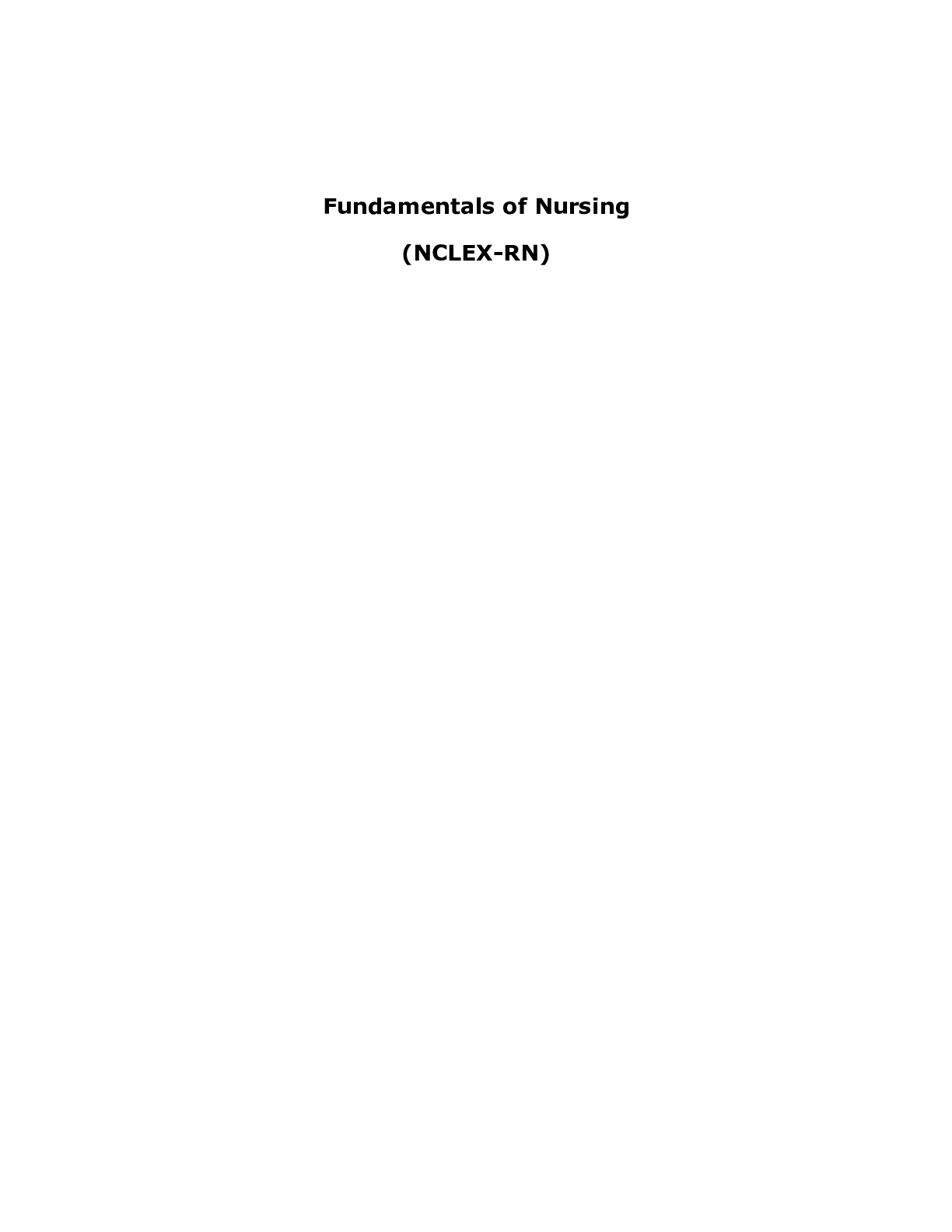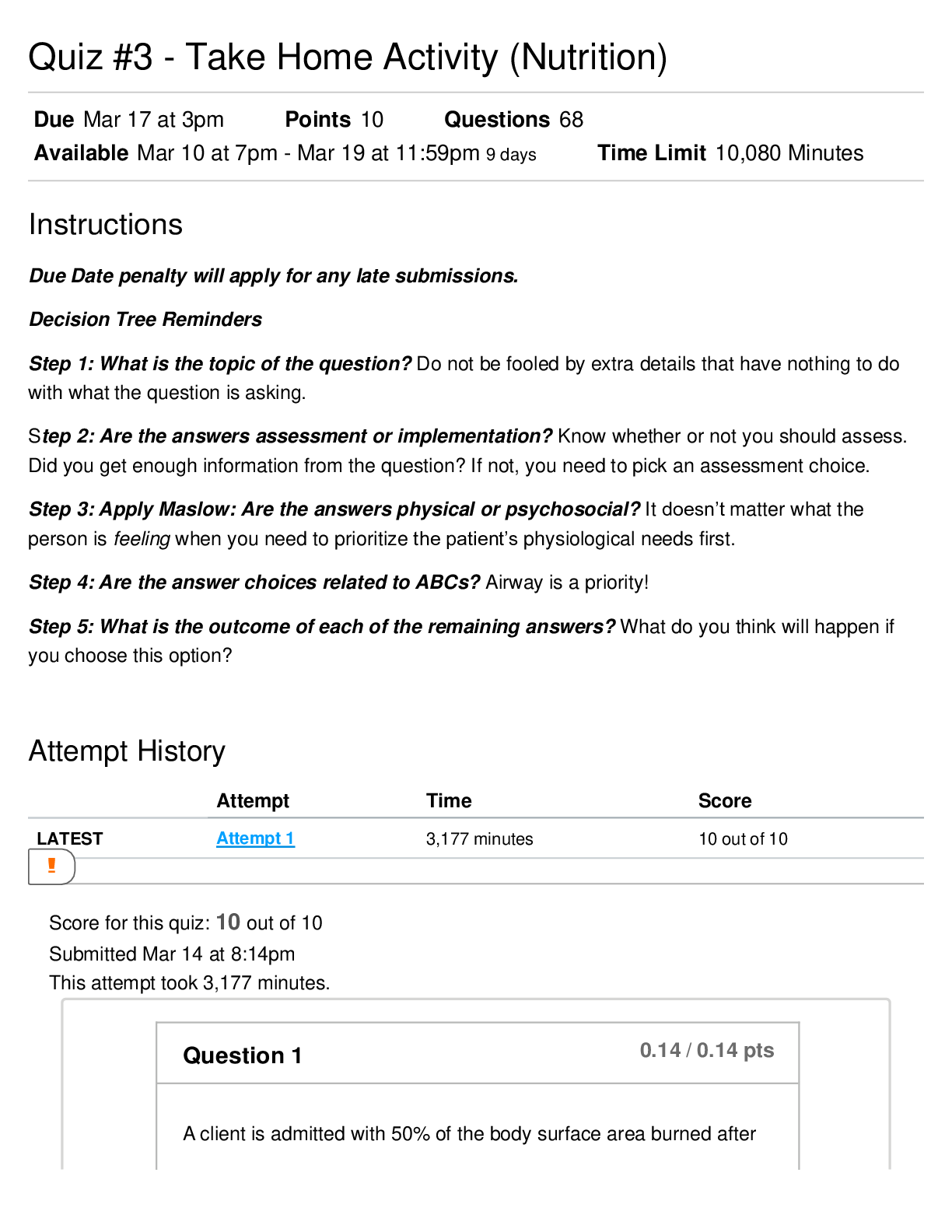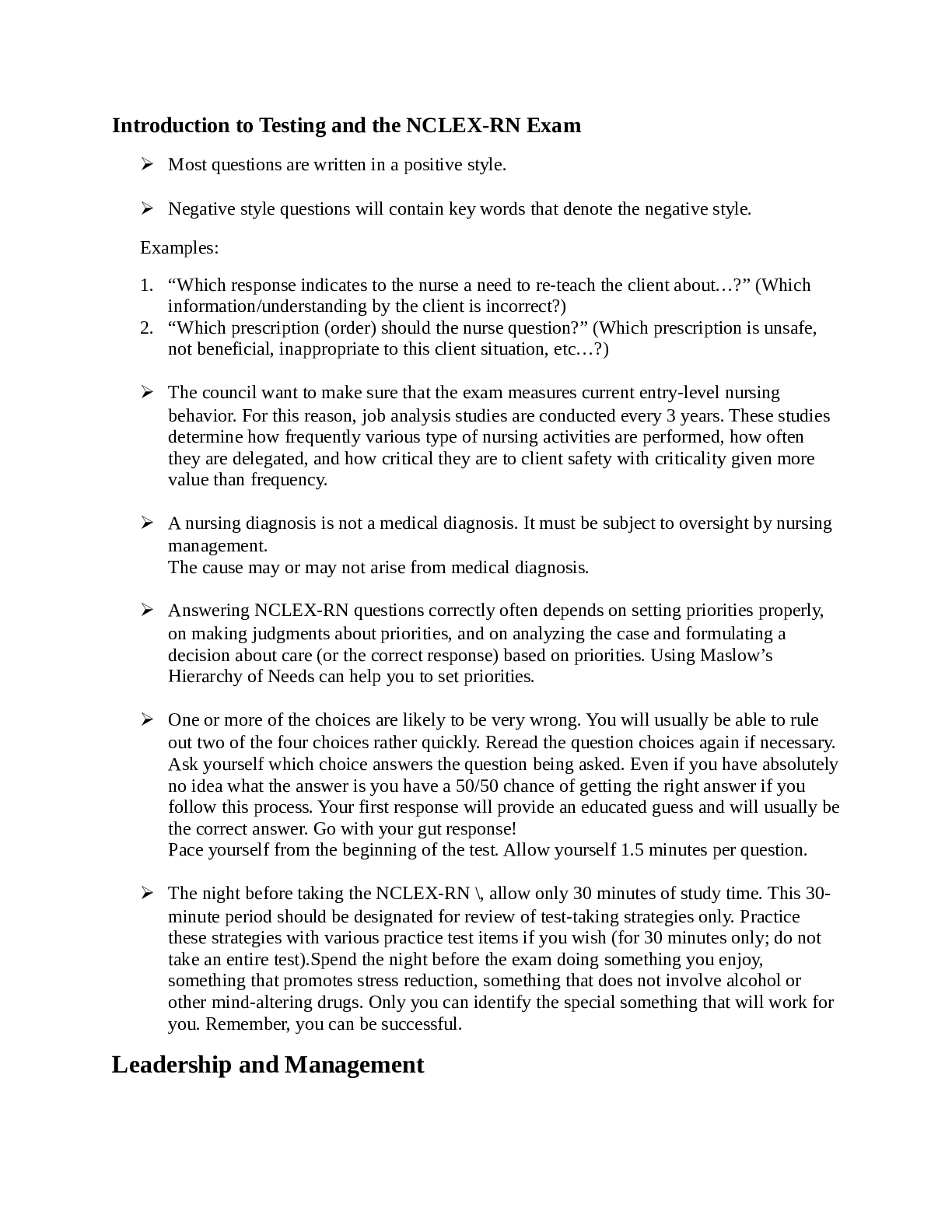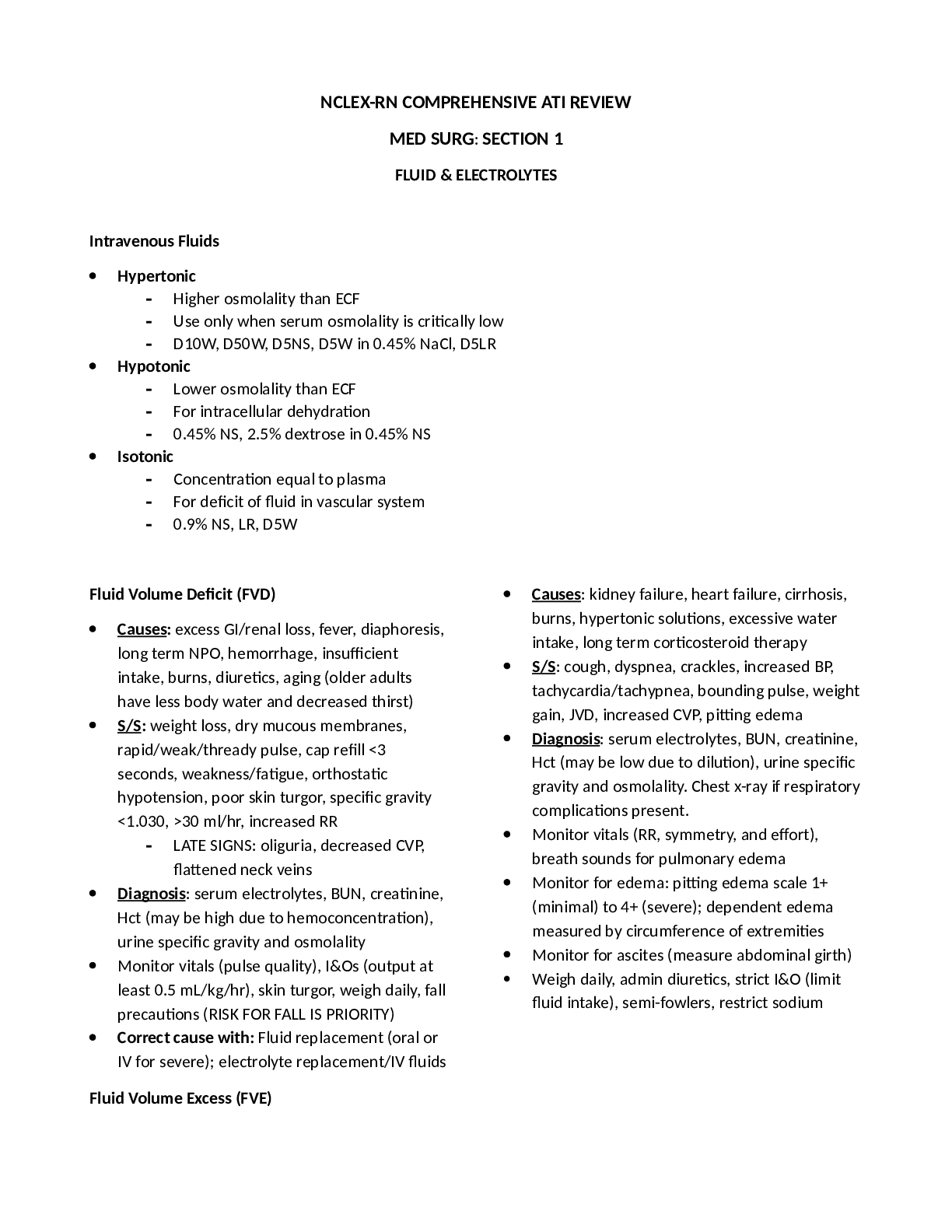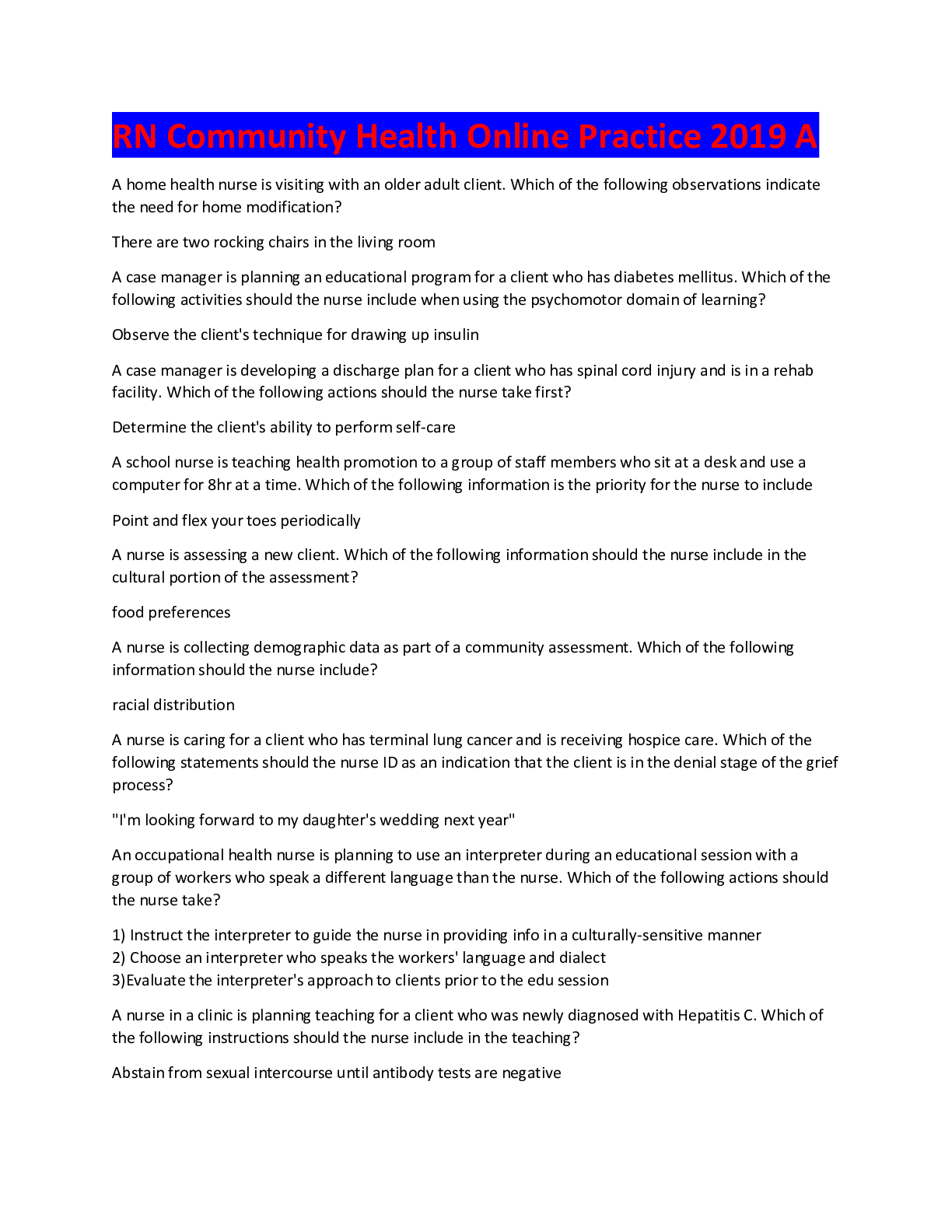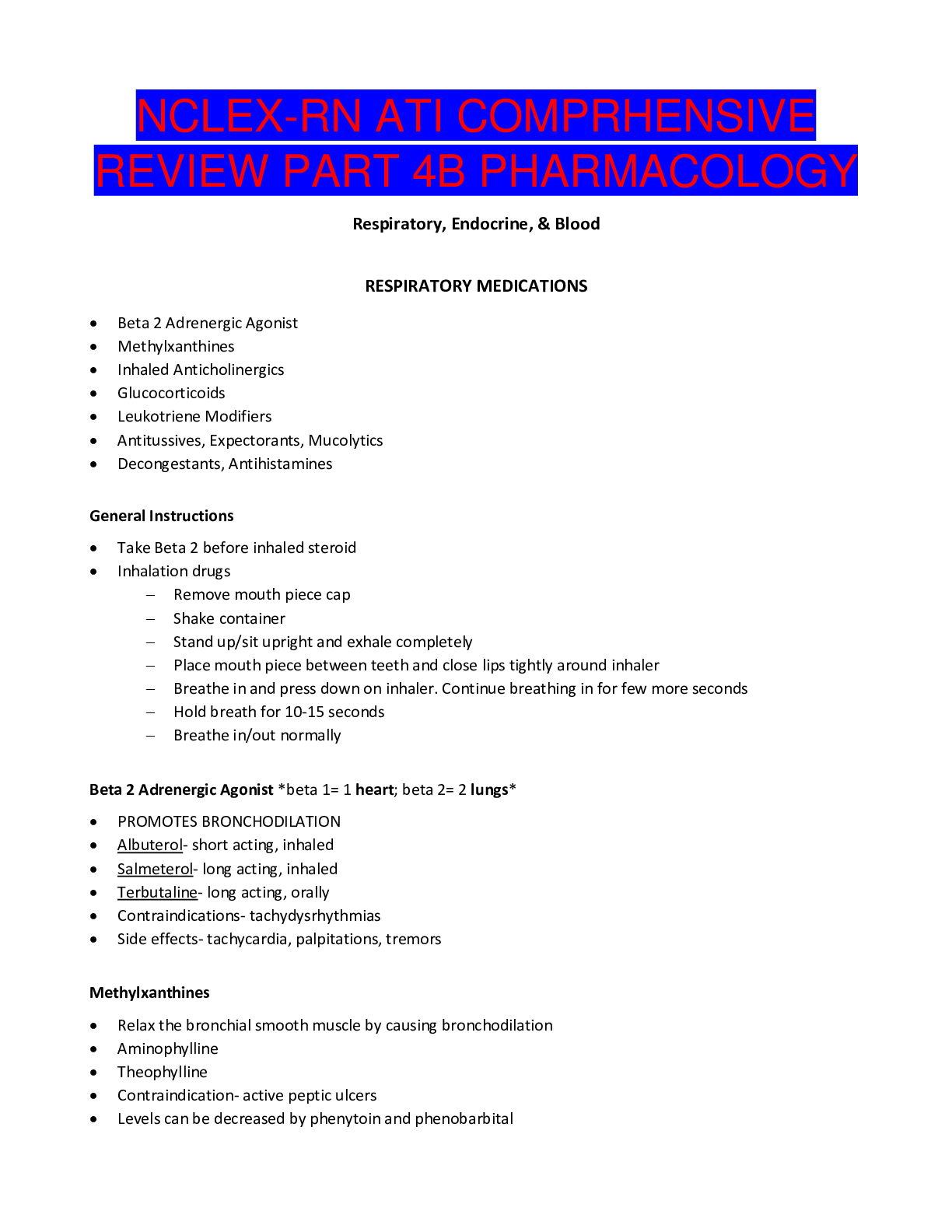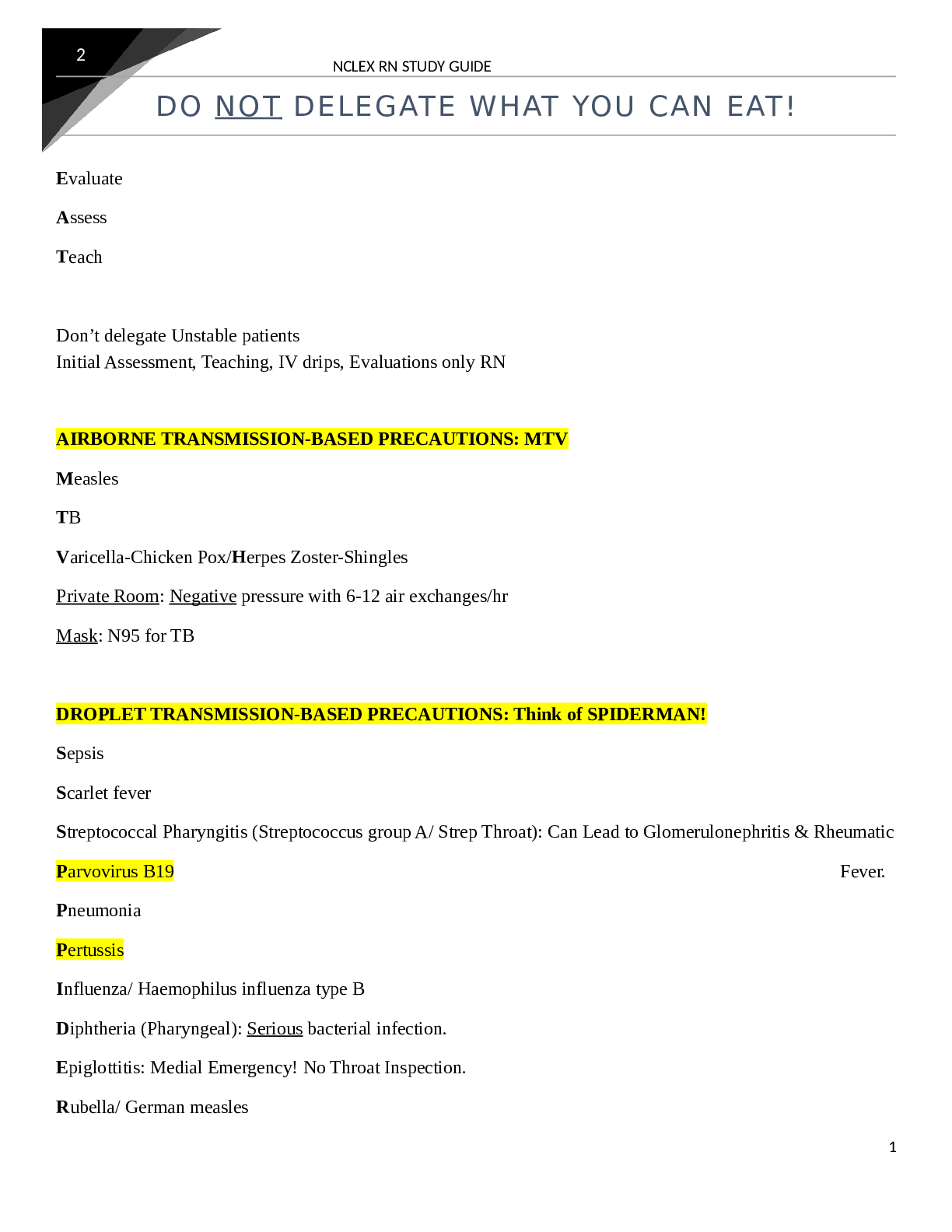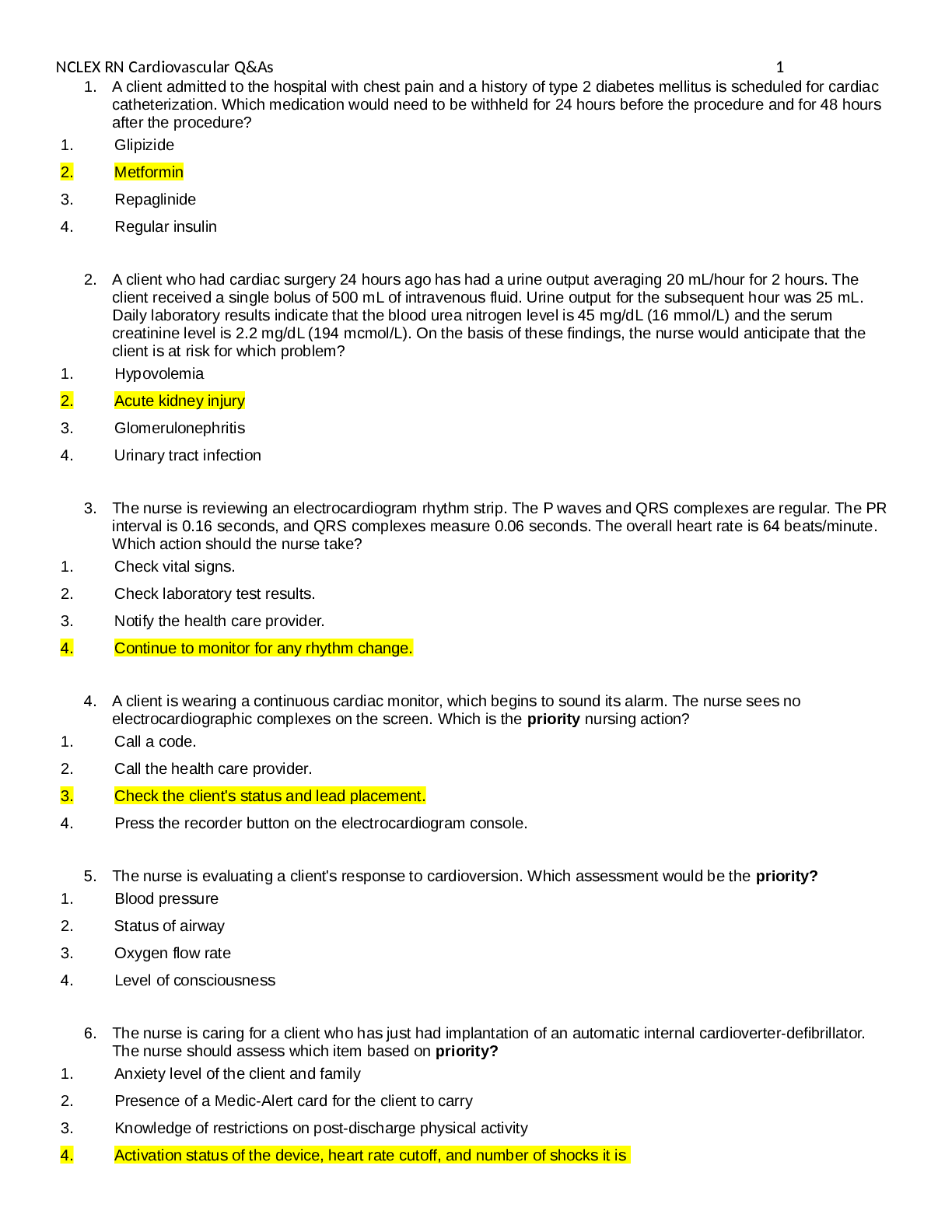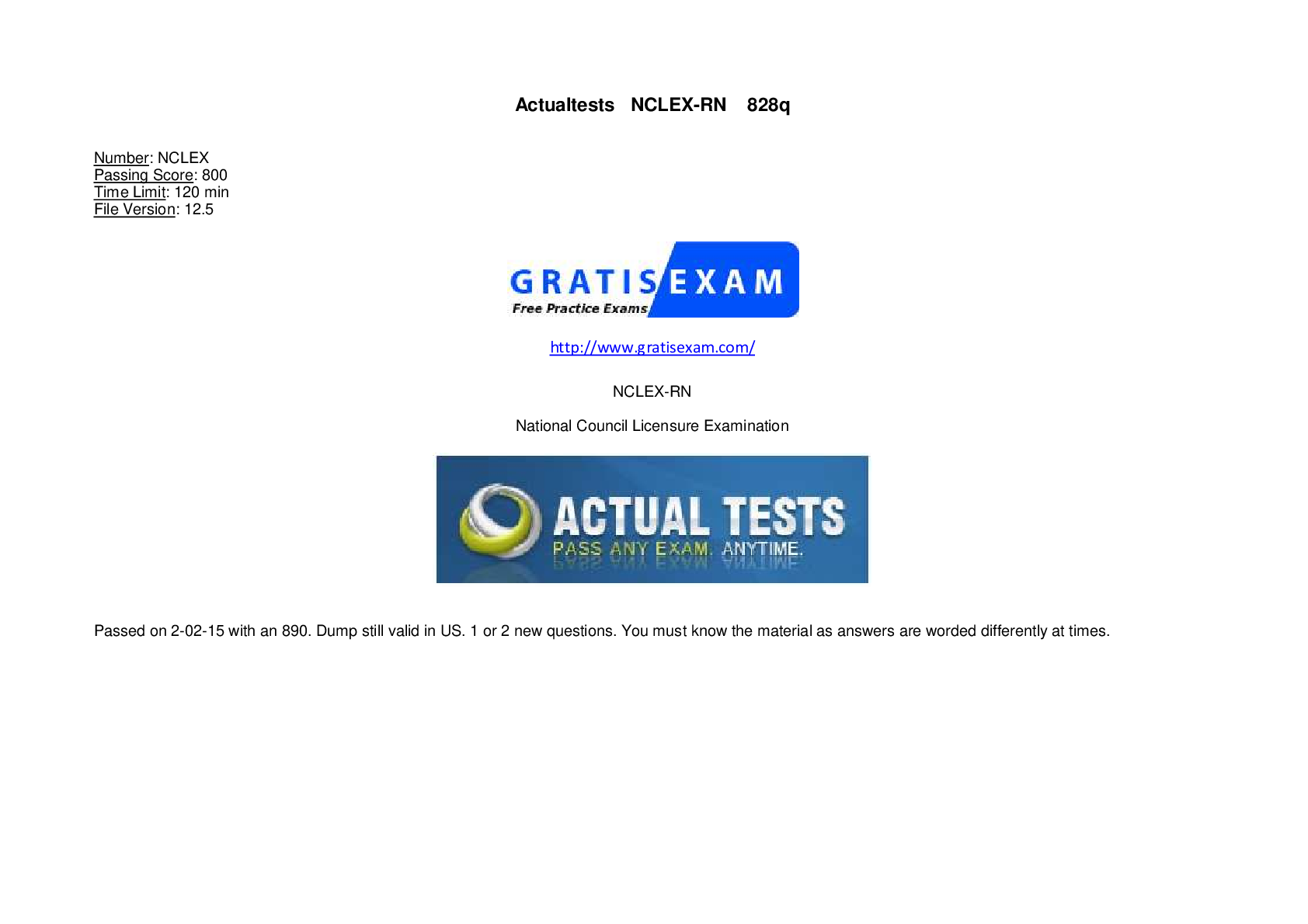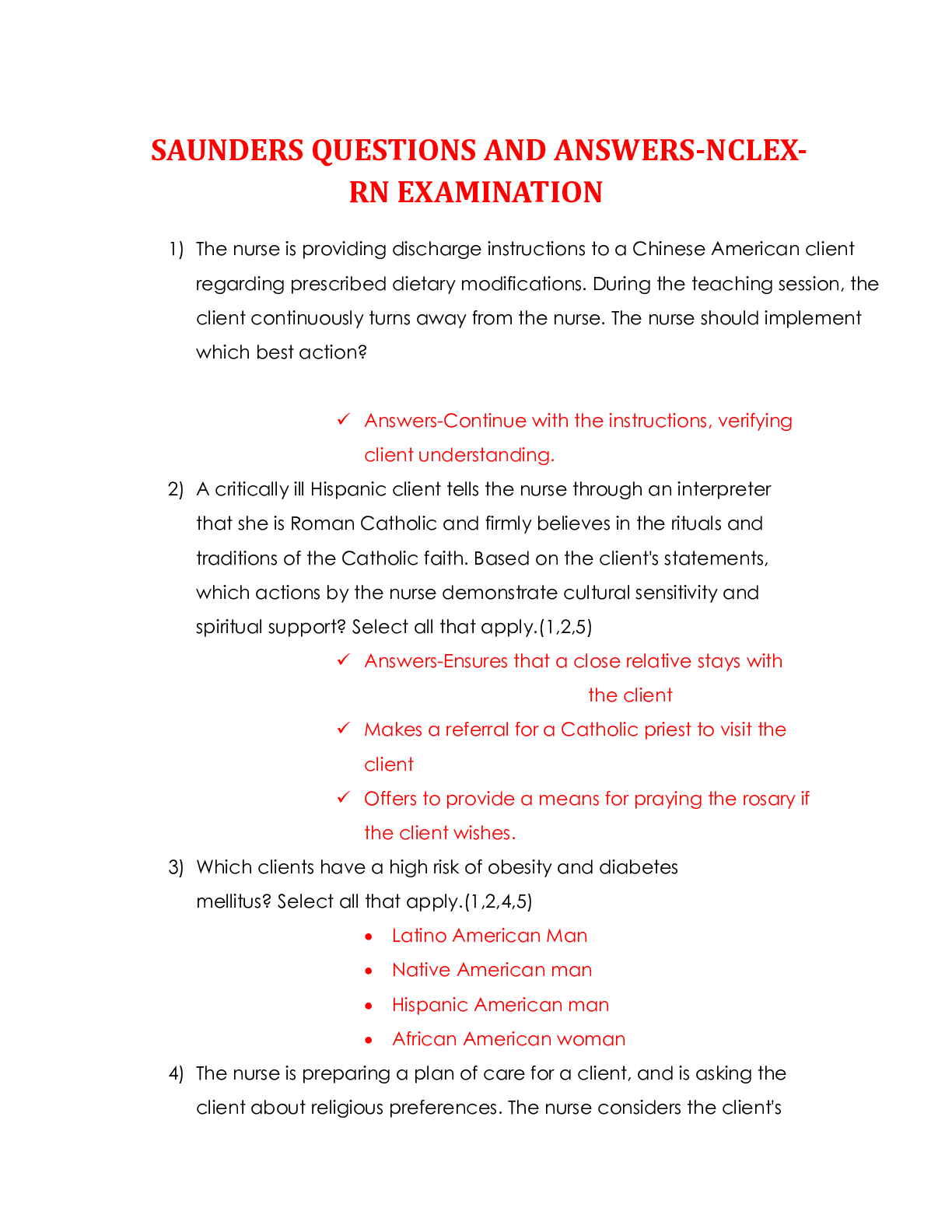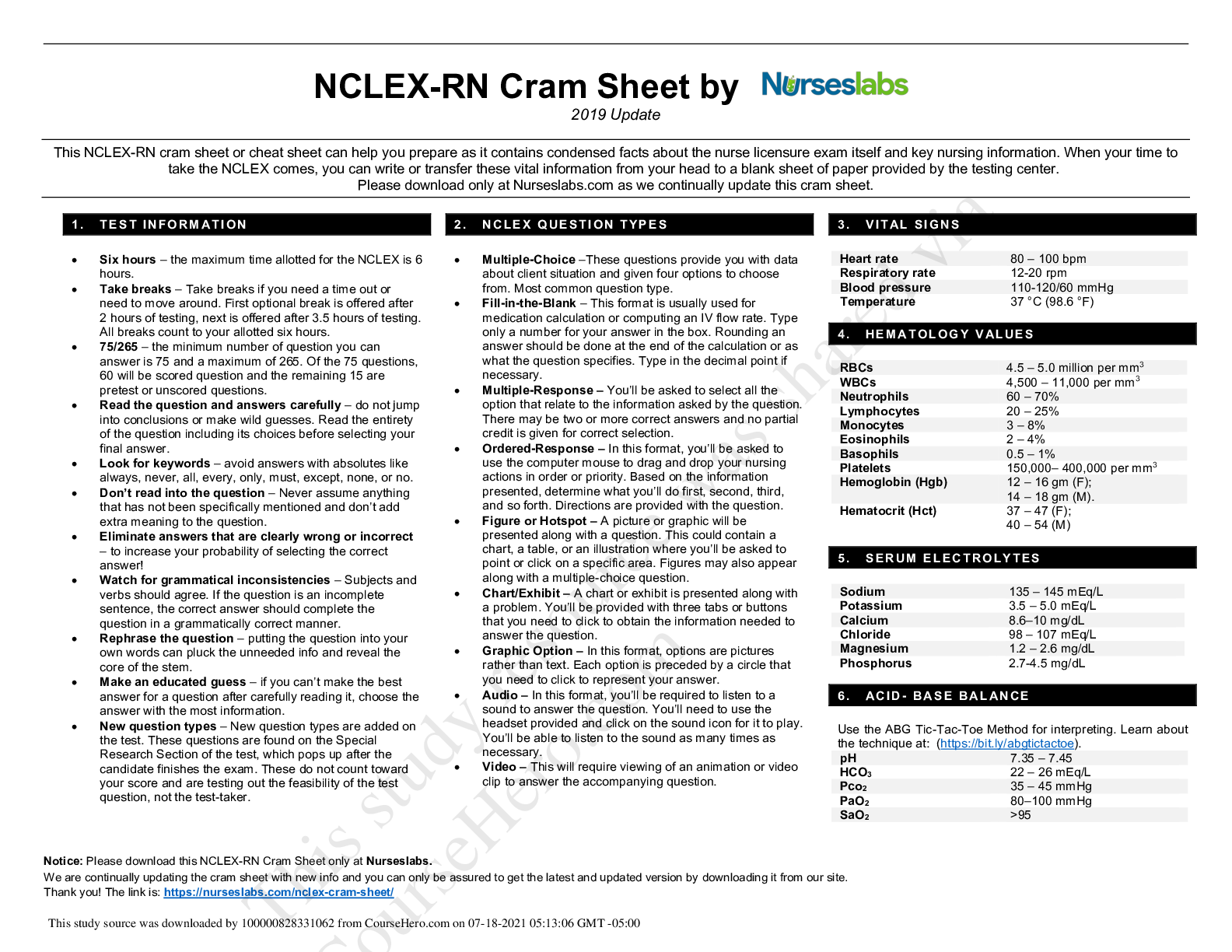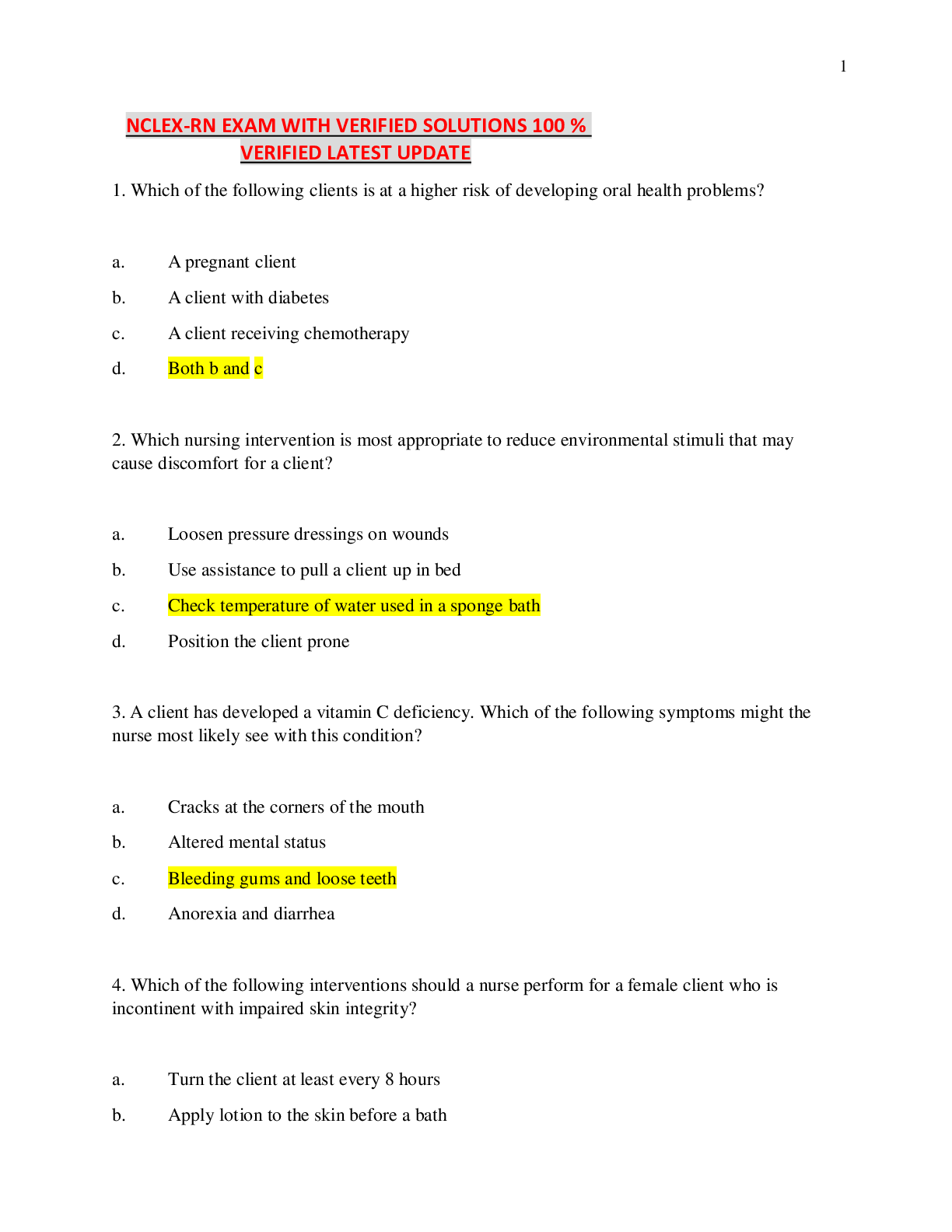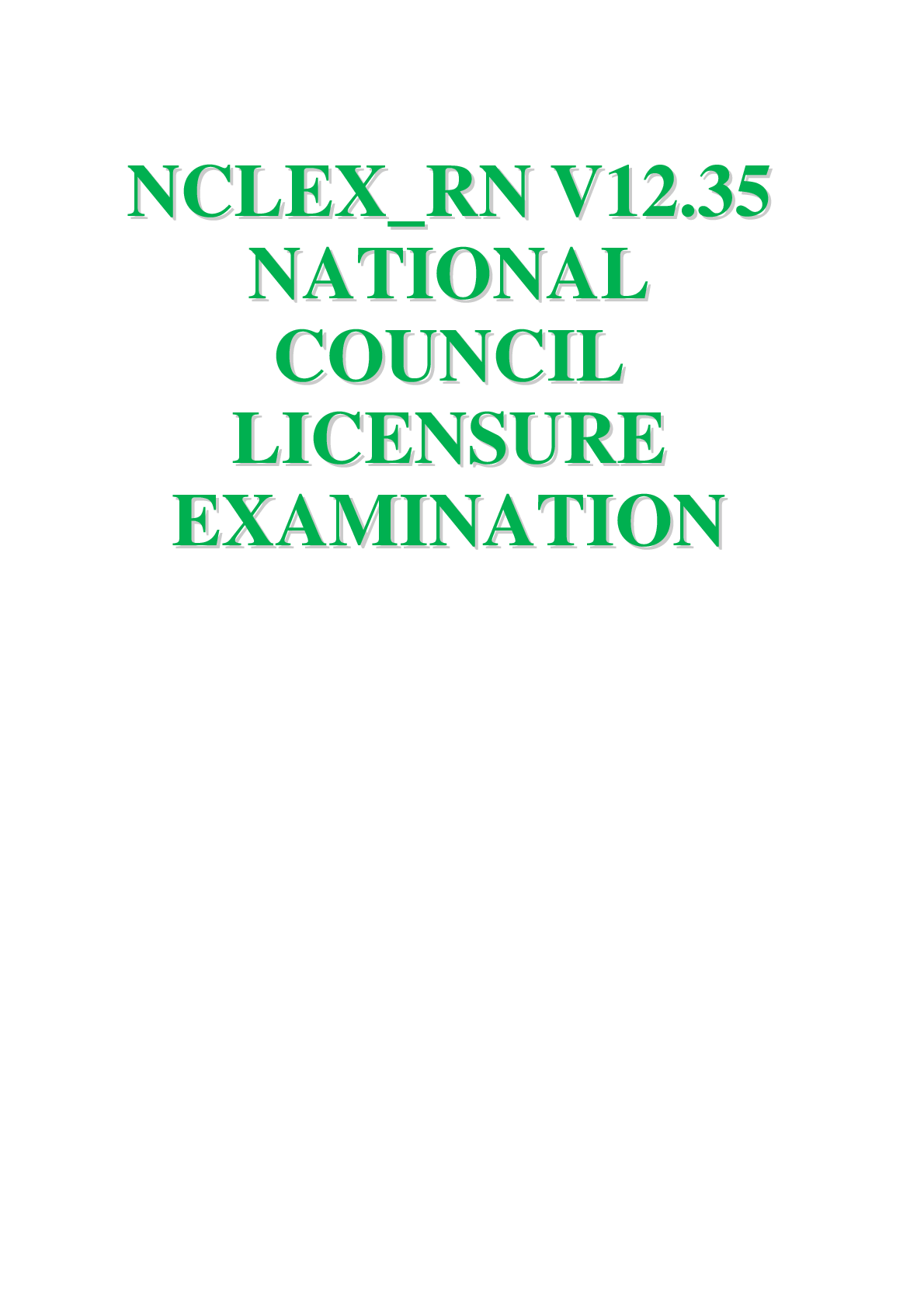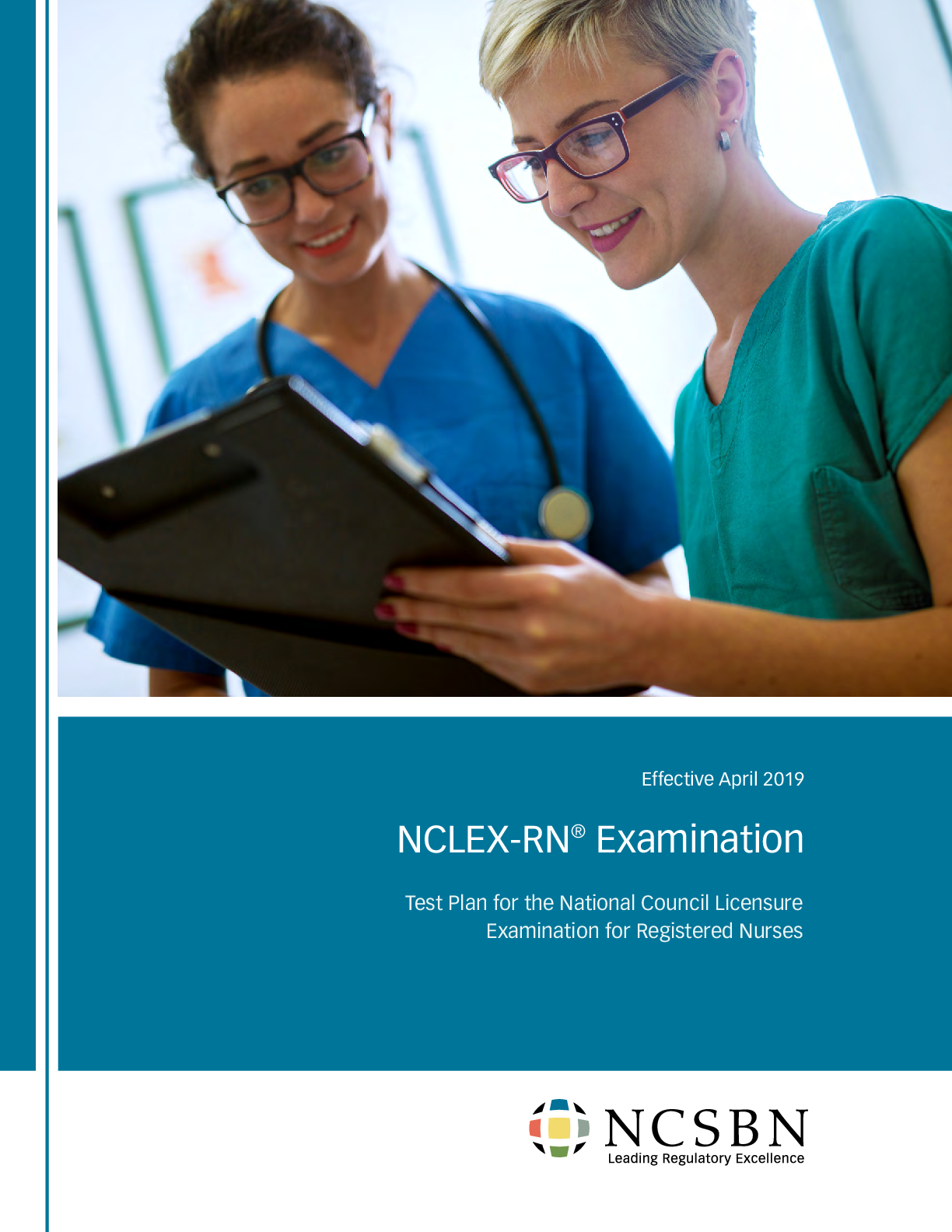*NURSING > NCLEX-RN > NCLEX-RN ATI COMPRHENSIVE REVIEW PART 4A PHARMACOLOGY Medication concepts, IVs, and Cardiac Meds (All)
NCLEX-RN ATI COMPRHENSIVE REVIEW PART 4A PHARMACOLOGY Medication concepts, IVs, and Cardiac Meds
Document Content and Description Below
NCLEX-RN ATI COMPRHENSIVE REVIEW PART 4A PHARMACOLOGY Medication concepts, IVs, and Cardiac Meds IV infusion complications • Infiltration- IV fluid escapes into tissues- stop infusion, take cat... heter out, cold compress, elevate, insert catheter in opposite extremity • Extravasation- toxic drug leaks out of vein & onto skin causing a chemical reaction-stop infusion, discontinue, aspirate as much as possible, cold compress, document findings • Pheblitis- inflammation of vein- stop infusion/discontinue, remove IV, put heat on it, insert new IV in opposite extremity (thrombophlebitis same except involves clot) • Hematoma- leakage of blood from vessels- stop IV and apply pressure • Catheter embolus- piece of catheter breaks of and travels through circulatory system-immediately apply tourniquet, xray • REMEMBER STOP IV AND NEW CATHETER IN OPPOSITE EXTREMITY Central Venous Catheter Complications • Pneumothorax- collapsed lung- Tx: oxygen and chest tube admin. • Air Embolism- air enters vein/artery- Tx: left lateral trendelenberg position & give oxygen • Lumen Collection- • Bloodstream infection- maintain sterility, change entire infusion system, notify provider to obtain cultures and give antibiotics PICC Line Complications • Catheter Occlusion- reposition arm/prevent any kinks, confirm blood return, flush catheter btw meds and give thrombolytics • Catheter Dislodges- assess blood return, check for discomfort in jaw/chest/ear (tell provider, may mean dislodged) • Pheblitis • Catheter Embolism • Infection- remember aseptic technique, dressings clean and dry, report immediate signs of infection Total Parenteral Nutrition (TPN)- hypertonic solution • Verify Rx & with another nurse • Via infusion pump • Monitor WEIGHT DAILY • Monitor I&O, glucose Q4-6hr, signs of infection • Change dressing 48-72hrs • Change IV tubing and fluid 24hrs • IF TPN NOT AVAILABLE GIVE DEXTROSE 10% IN WATER- to prevent hypoglycemia Antidotes • Acetaminophen (causes liver damage)- acetylcysteine • Benzodiazepine- flumazenile • Cyanide poisoning- methylene blue • Digitalis-digoxin immune FAB • Heparin/Enoxaparin (low weight heparin)- protamine sulfate • Iron- defeoxamine • Lead- succimer • Magnesium Sulfate- calcium gluconate (too much mag leads to hyperactive DTR, same with too little calcium=muscle twitching, CNS twitching) • Narcotics- NALAXONE • Warfarin- Vitamin K (Phytonadione) ……………………………………………………………….continued………………………………….. [Show More]
Last updated: 1 year ago
Preview 1 out of 5 pages
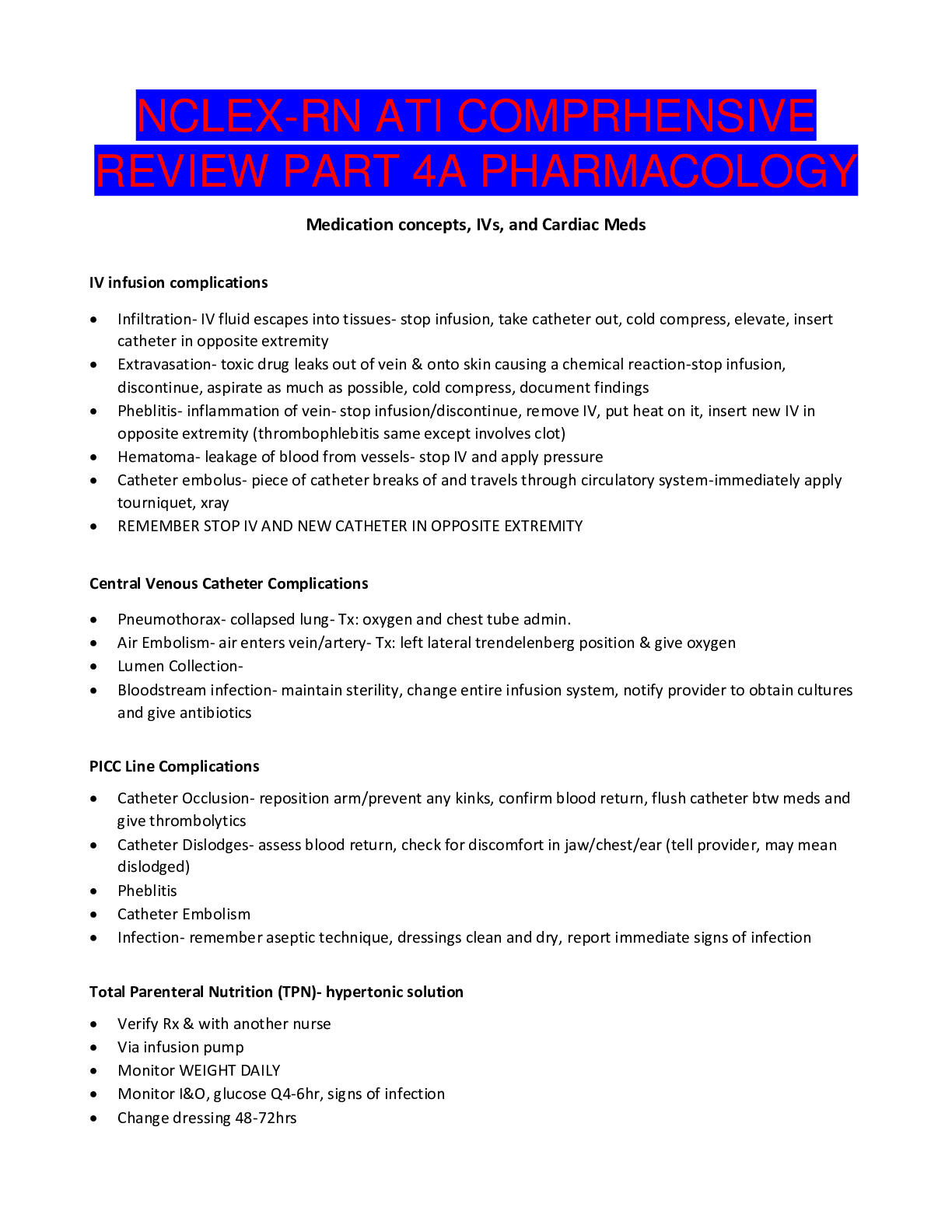
Reviews( 0 )
Document information
Connected school, study & course
About the document
Uploaded On
Jan 16, 2021
Number of pages
5
Written in
Additional information
This document has been written for:
Uploaded
Jan 16, 2021
Downloads
0
Views
43

